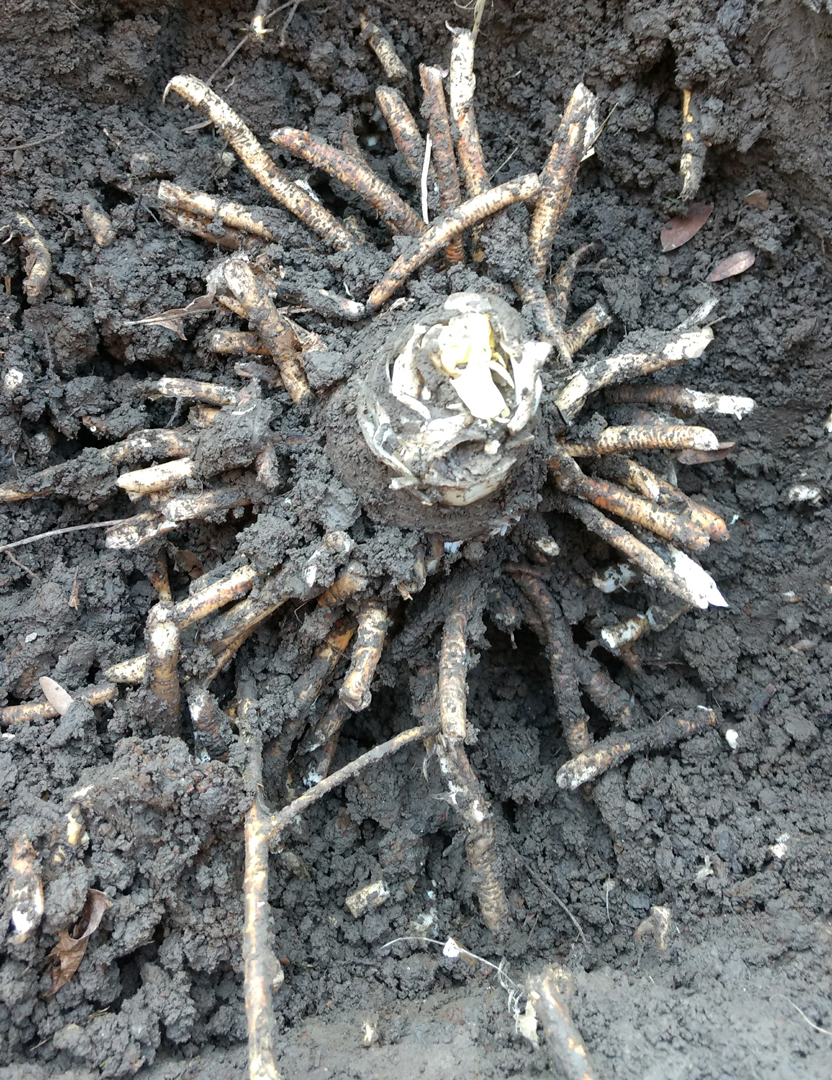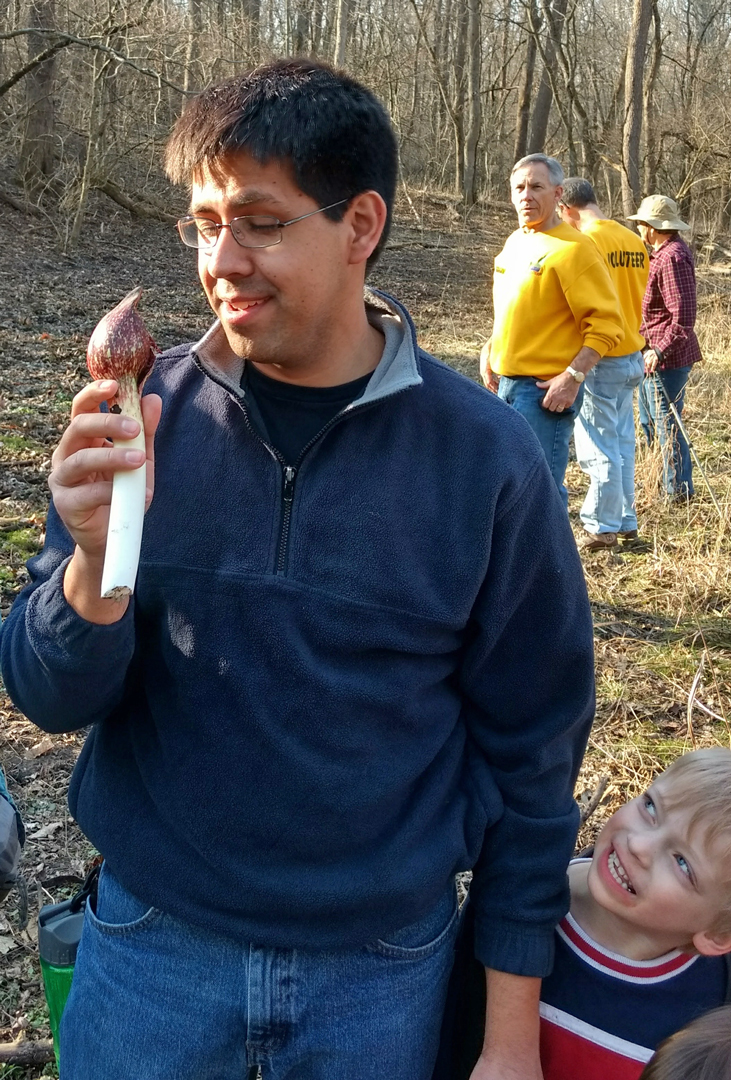
We all went down in the woods today…
Actually, it was more like two weeks ago, and boy, did we get a surprise. It was not a Teddy Bear’s Picnic that we found. Our discovery was rooted in much deeper stuff and was quite stinky besides.
For years I had wondered what the roots of skunk cabbage look like, and today was the day to find out. I was leading a group of visitors and volunteers out to one of the skunk cabbage patches at Prairie Oaks Metro Park. I have found this fascinating plant in a variety of conditions over the years—under two feet of water, in negative degree temperatures, and even under a foot of snow. But never have I had the pleasure of finding skunk cabbage on a warm and sunny day, because in February it’s usually cold and snowy. On this February day, in was 70 degrees!
There are so many amazing things about the skunk cabbage, the ability to produce heat and melt snow, the awful smell it emits to attract flies, the fact that the flower looks nothing like a flower and it unfurls two to four-foot leaves once the the flower has died off. But what about the roots?
I had read that the roots of skunk cabbage are as thick as pencils and are so deep into the ground that it is almost impossible to dig up the plant. The roots are massive, and unlike other plants, there is no tap root. Instead there are many rootlets that make up a giant ball, called a rootstock. The roots are contractile which means they pull the plant deeper into the soil and every year the plant becomes more deeply anchored into the ground.

Today was the day to uncover the rootstock. I just knew I had to see what was hiding under the ground.
Thunk! Thunk! Thunk! The sound of the soil falling from the shovel echoed in my mind as we dug deeper into the ground. We were digging for buried treasure, and the excitement was getting to me. As we unearthed more and more of the path to our treasure, my mind raced with questions. How deep was it? Was it all in one piece? Would we be done in time for lunch?
With every shovel full of rich, deeply brown soil, we began to get closer and closer to our goal, and the tension started to rise. It seemed in my mind that we should have reached China by now, as time had started to slow.
Finally, we reached our goal, a skunk cabbage rootstock. Our prize looked foreign, alien even. It was true—the roots were as thick as a pencil and coming out in every direction. Out of the depths of the earth, we had brought forth the object of our search, a giant alien-looking ball of skunk cabbage roots and I shuddered with glee!
JEN ROSA
Naturalist Prairie Oaks
